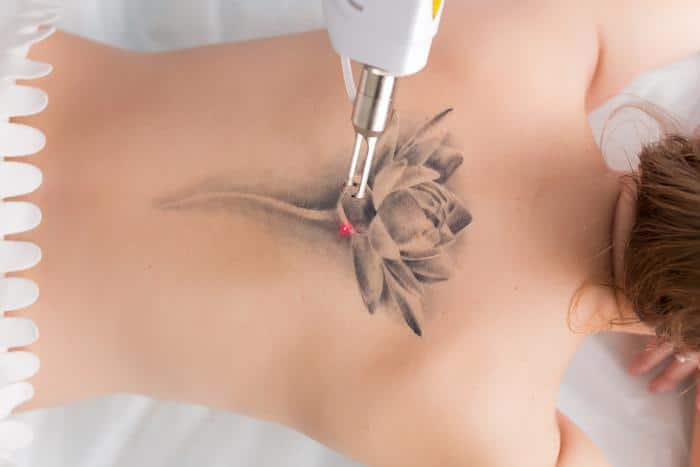You imagined yourself as being a joiner, but now you’re among celebrities like Ariana Grande and 23% of average joes and janes who had a tattoo but later regretted it. Whether it’s a long-term tattoo that you loved for years or a short-term mistake, all tattoos can be removed. That’s right: All tattoos can be removed, as long as you use a highly effective state-of-the-art laser.
At Skin Deep Laser MD in Fort Worth, Texas, our founder, Dr. Laura Riehm, relies on the PicoSure® Laser by Cynosure® to remove even the most elaborate and multi-colored tattoos.
We know how important it is to restore your skin to clarity and health, whether it’s to move forward to a new phase of your life or just to start afresh with beautiful, ink-free skin.
Of course, after having regrets about your tattoo, you may be a little reluctant to move into a removal treatment without having any idea about how it works, or even if it’ll work. Here we share a few insights into why the PicoSure Laser is so effective, and why you’ll be happy with your end results.
Step 1: Shatter the pigment
When you have a tattoo, the pigment is embedded deeply in the layers of your skin. That’s why you can’t just “erase” it by scrubbing your epidermis. The first step in tattoo removal is to shatter the topmost layer of pigment so that it breaks into tiny fragments that your body then flushes away over the next few weeks.
Dr. Riehm selects a wavelength on the PicoSure that matches the color of your tattoo pigment. She uses a 755 nm wavelength to target dark black, blue, and green tattoo inks. If you only want part of your tattoo erased, she shields the areas you want to keep and focuses the PicoSure on the areas you want to remove. If your tattoo contains “sunset” colors — such as red, yellow, and orange — she shatters those pigments with a 532 nm wavelength.
The lightest colors are actually the most difficult to remove, but Dr. Riehm can erase those, too. If you have pale yellow or white on your tattoo, the laser’s energy first oxidizes them, so they turn tan or brown. At a later session, the darker ink is easier to shatter with the laser, so it, too, is eventually excreted from your body.
Step 2: Let your body do its work
For successful tattoo removal that doesn’t damage the skin or leave scars or burns, it’s important to break the pigment into minuscule pieces that are then processed through your body’s lymphatic system.
That’s why DIY tattoo-removal methods don’t work and can damage your skin. By merely scrubbing away at pigment, you’re also scrubbing away your skin. You also can’t scrub deeply enough to remove all of the layers of pigment.
Instead, Dr. Riehm helps your body remove your tattoo by directing the PicoSure Laser only to the tattoo ink, completely bypassing the surface of your skin. The pulses of energy last just trillionths of a second. The shattered tattoo ink passes into your bloodstream, where it’s processed by your liver, and eventually excreted naturally.
Step 3: Target another layer
You need to be patient when you’re removing your tattoo. It takes a lot longer to shatter the deep layers of pigment than it does to put them there in the first place. Most tattoos need at least five sessions with a PicoSure Laser to remove the very last traces of ink.
You have to allow about six weeks between each treatment session so your body can flush away the shattered ink, and your skin can fully recover from the laser treatment.
Several months after your final tattoo-removal session, your body has completely cleared away the shattered ink pigment. Your skin is once again clear and healthy looking. The laser’s energy also helps your skin heal and rebuild itself with new collagen.
To get started on your tattoo removal with PicoSure, contact us today by phone or online form.


